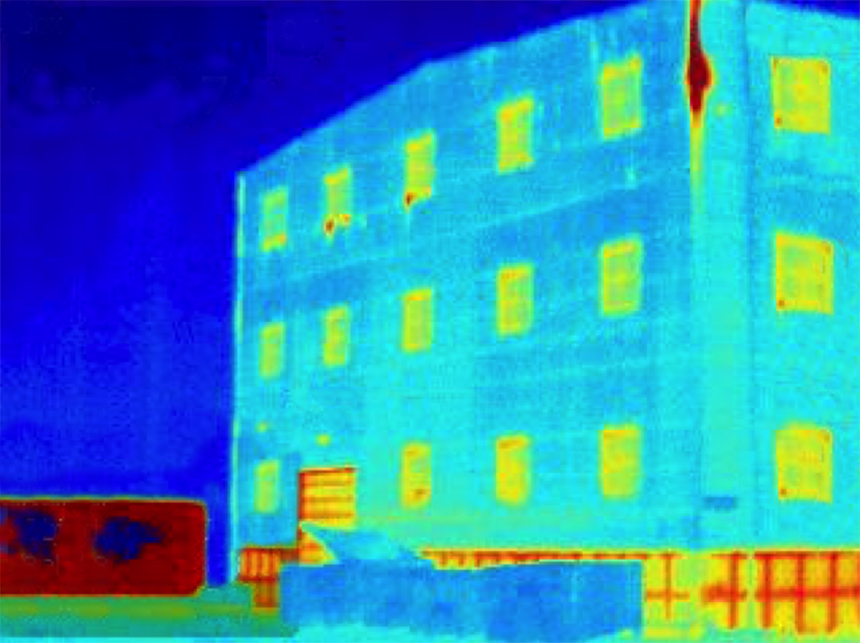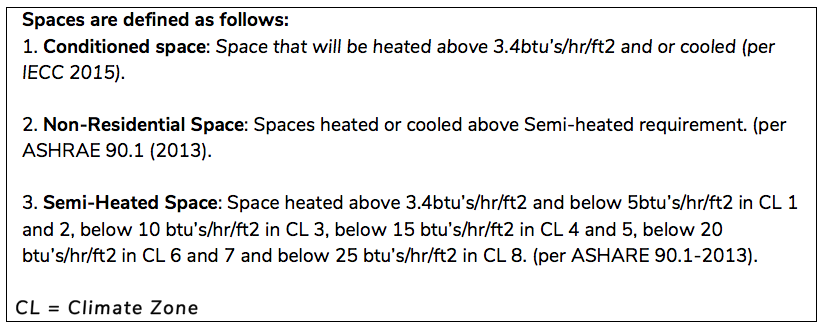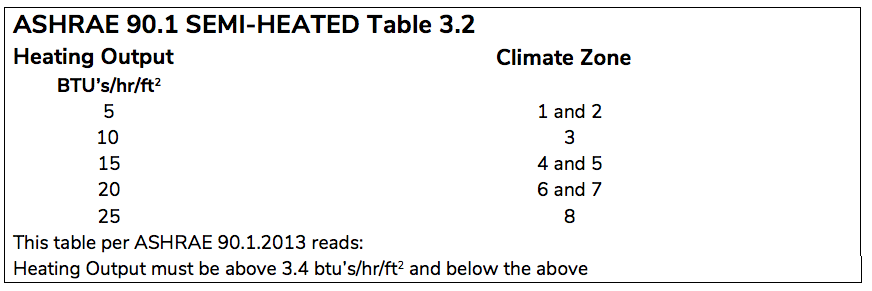 Earlier this year I attended the ASHRAE meetings in Atlanta, where we worked on the final stages of the 2019 ASHRAE 90.1 Standard. Though it’s not yet ready for publishing, there will be quite a few changes from the current code cycle to the 2019 Standard. With plenty of new changes on the horizon, now is as good a time as any for me to provide a comprehensive update on the current state of the codes landscape, as well as what you can expect for the rest of the year.
Earlier this year I attended the ASHRAE meetings in Atlanta, where we worked on the final stages of the 2019 ASHRAE 90.1 Standard. Though it’s not yet ready for publishing, there will be quite a few changes from the current code cycle to the 2019 Standard. With plenty of new changes on the horizon, now is as good a time as any for me to provide a comprehensive update on the current state of the codes landscape, as well as what you can expect for the rest of the year.
Before I get into specifics, take a step back and think about it: The metal building industry has witnessed a tremendous shift over the last several years. Increasingly stringent energy codes have propelled the industry toward more sustainable construction and innovation that we wouldn’t have imagined a few decades ago. An entirely new vocabulary is used when talking about metal buildings: “Conditioned Space”, “climate zones”, “air barriers”; 30 years ago this was all Greek. Additionally, newer energy codes contain higher performance expectations, which not only require more insulation, but also call for more advanced systems, such as air barrier systems, liner systems, and daylighting.
The Difference Between ASHRAE and IECC
Any thorough commercial energy code update wouldn’t be complete without a review of the basics. If you feel comfortable with this information and don’t need the primer, skip down to the section titled, “Code Adoption by State as of December 2018”.
First, ASHRAE 90.1 is a minimum Standard of energy efficiency, not a code agency. IECC is a model energy code that references the ASHRAE 90.1 Standard.
Other differences include:
- ASHRAE 90.1 and IECC have different three-year cycles.
- IECC follows behind ASHRAE 90.1 by two years. For example, IECC 2012 references ASHRAE 90.1-2010. IECC 2015 references ASHRAE 90.1-2013.
- IECC references the latest ASHRAE Standard, plus any addendums and new data. The IECC code sometimes increases efficiencies in certain areas, which means that, in some cases, the IECC code can be more stringent than the ASHRAE Standard.
What’s In An Energy Code
Remember that there are three major components of an energy code:
- Lighting
- HVAC
- Envelope
Additionally, there are many elements within the building envelope subject to energy code regulations:
- Opaque roof and wall assemblies
- Windows
- Skylights
- Pre-Assembled Doors
- Knock-Down and Specialty Doors
- Foundation
- Floor
This blog post focuses on changes to roof and wall assembly code requirements, but remember that there are updates to other elements of the building envelope that you should also be aware of.
Code Adoption by State as of December 2018
 The resources we most commonly use for state code changes include the Department of Energy (DOE), the Building Codes Assistance Project (BCAP), and the International Code Council (ICC). This chart, which is a comprehensive list of code adoptions in each state, is current as of December 2018. You can think of this as the “holy grail” for determining which adoptions have been made in your state. Again, here’s the link to access the International Code Adoption by State chart.
The resources we most commonly use for state code changes include the Department of Energy (DOE), the Building Codes Assistance Project (BCAP), and the International Code Council (ICC). This chart, which is a comprehensive list of code adoptions in each state, is current as of December 2018. You can think of this as the “holy grail” for determining which adoptions have been made in your state. Again, here’s the link to access the International Code Adoption by State chart.
The Newest Code Cycle: IECC 2018/ASHRAE 90.1-2016
Under the newest code cycle, metal buildings are required to have more insulation than ever before.
While the ASHRAE 90.1-2019 Standard hasn’t been published yet, the 2016 Standard is out and ready for adoption. Thus, we refer to “IECC 2018/ASHRAE 90.1-2016” as the “newest” code cycle. While a handful of cities throughout the country have adopted it, no statewide adoptions have been made yet.
In terms of updates, you can expect to see the majority of changes in air sealing and blower door testing*. Additionally, there’s a reduced BTU table for semi-heated space. This means that the maximum allowable heat output per climate zone has been reduced, thus making the semi-heated compliance path more difficult to use. Remember that these comparisons are based
* Comparison is based off IECC 2015 and ASHRAE 90.1-2013.
The Most Widely Adopted “New” Code: IECC 2015/ASHRAE 90.1-2013
The most widely adopted “new” code cycle is IECC 2015 and ASHRAE 90.1-2013. If your current state’s code is based on the IECC 2009/ASHRAE 90.1 2007 Standard, you’ll see the most significant envelope changes. Many states currently at the IECC 2009 code are bypassing IECC 2012 altogether (or have already done so) and adopting IECC 2015. Pennsylvania and South Carolina are examples of this. On October 1st2018, Pennsylvania changed from IECC 2009/ASHRAE 90.1-2007 to the IECC 2015/ASHRAE 90.1 2013 Code. South Carolina did the same as of January 1st, 2019. This is a huge jump, and many metal building contractors will feel the pressure. If you haven’t used Liner Systems (Ls) or Filled Cavity/Long Tab Banded Systems (FC)in the past, you will need to start using them. Both options fulfill the metal building insulation requirements; it’s just a matter of preference.
Highlights of the IECC 2015/ASHRAE 90.1-2013 cycle include:
- Higher insulation values: IECC 2015 and ASHRAE 90.1-2013 have the most stringent envelope requirements based on “Conditioned Space” and “ Non-Residential Space”. This means that, for the most part, contractors will need to use Liner Systems (Ls) or Long Tab Banded Systems (Fc) in order to meet the stricter insulation requirements. The only exceptions are unheated buildings, which are exempt, and semi-heated buildings, which require less insulation as described above.
Table 3.2 (below), which is used for determining semi-heated space, has not changed from older code cycles to this one.
If semi-heated is not allowed based on the heating system or jurisdiction, then each climate zone will have major increases in thermal performance, which translates to increased insulation levels under the non-residential space. This is based on the ASHRAE 90.1-2013 Standard;
- Air barrier requirement: Both IECC 2015 and ASHRAE 90.1-2013 require an air barrier in the thermal envelope, and for it to be indicated in drawings. It can be placed on the interior side, exterior side, somewhere within assemblies composing the envelope, or any combination thereof.
- In IECC 2015, this can be found in section C 402.5.1 and C 402.5.1.1. (EXCEPTIONS = UNHEATED BUILDINGS).
- In ASHRAE 90.1 2013 its found in section 5.4.3,4.3.1.1 and 5.4.3.1.2. (EXCEPTIONS = SEMI-HEATED BUILDINGS IN CLIMATE ZONES 1-6).
It is also mandatory to identify the air barrier and for it be continuous across joints and assemblies. Joints and seams must be sealed and securely installed. Penetrations and joints and seals associated with penetrations must be sealed in a manner compatible with construction material and location. These must be shown on the drawings submitted for permitting.
- Compliance path: Under the IECC 2015 Code and ASHRAE 90.1-2013 Standard, it’s still the same choice. The designer decides to follow one of three paths: Materials, Assembly, or Whole Building. The Materials path is just that – any
material tested under ASTM E 2178. Assembly is a combination of envelope materials built and tested under ASTM E 2157, 1677 or 283. Whole Building testing requires ASTM E 779. If this option is used, and the building fails, it must be brought in compliance with the leakage rate allowed. This means that you cannot opt-out of this path once it’s chosen by the designer. ASHRAE 90.1-2013does allow a lesser leakage rate if repairs are made.
- States that have adopted IECC 2015/ASHRAE 90.1-2013
include: Alabama, California, Illinois, Maryland, Massachusetts, Michigan, New Jersey (adopted ASHRAE 90.1-2013), New York, Oregon, Utah, Texas, Vermont (state-specific code modeled after IECC 2015) and Washington. Georgia is also slated to adopt the code cycle over the next few months.
The Biggest Question to Answer in 2019: “What Do I Need to Meet Code?”
As we move toward more complexity in each code cycle, this longstanding question will only become even more common. As simple as the question is, it is very difficult to answer. In short, the compliance path I recommend most often is the prescriptive approach. Per the DOE, the prescriptive approach includes “requirements that either must be met by every building design, or if the requirement is not met, a tradeoff must be made to “make up” for not meeting that requirement.” In other words, you must meet all U-values of the roof, walls, foundation and fenestrations. If a tradeoff is indeed needed in the end, the quoted price has covered any changes.
Final Thoughts
The code cycle changes that are either here or coming soon to your state are, without a doubt, challenging to say the least. As an insulation supplier with multiple locations throughout the country, our teams have had to attend meetings for, learn about, and be involved with the entire process of code development. This is to assure our customers that we are providing code compliant envelopes to their customers and, on a larger level, the metal building industry. Overall, the newest code changes mean more efficient buildings, and more innovative solutions, that have greater potential to save end-users money.
Want to make sure you don’t miss out on the latest energy code updates?
Subscribe to our energy code newsletter to get blog posts sent directly to your inbox.
MORE BLOGS
Metal Buildings & Energy Codes: A Webinar With The Code Man
Join me Thursday, November 14th at 1 p.m. ET for a free webinar on the metal building envelope code changes you need to know. Participants will earn 1 AIA LU/HSW and/or a certificate of completion.
IECC 2015 And ASHRAE 90.1-2013: What You Need To Know
The next commercial energy code cycle for most states is the IECC 2015 code and ASHRAE 90.1-2013 alternative path.
Your Top Air Barrier Questions Answered + MaxTight™
Answering Your Questions, Plus Our New Air Barrier System
A Closer Look at Air Barriers:
What are the new air barrier requirements? Find out in this post.
Commercial Energy Codes Update for 2016
Let’s take a look at the top commercial energy code updates you should know for 2016.
5 Commercial Building Insulation Retrofit Facts To Know
Insulation retrofits in metal buildings: What you need to know.



